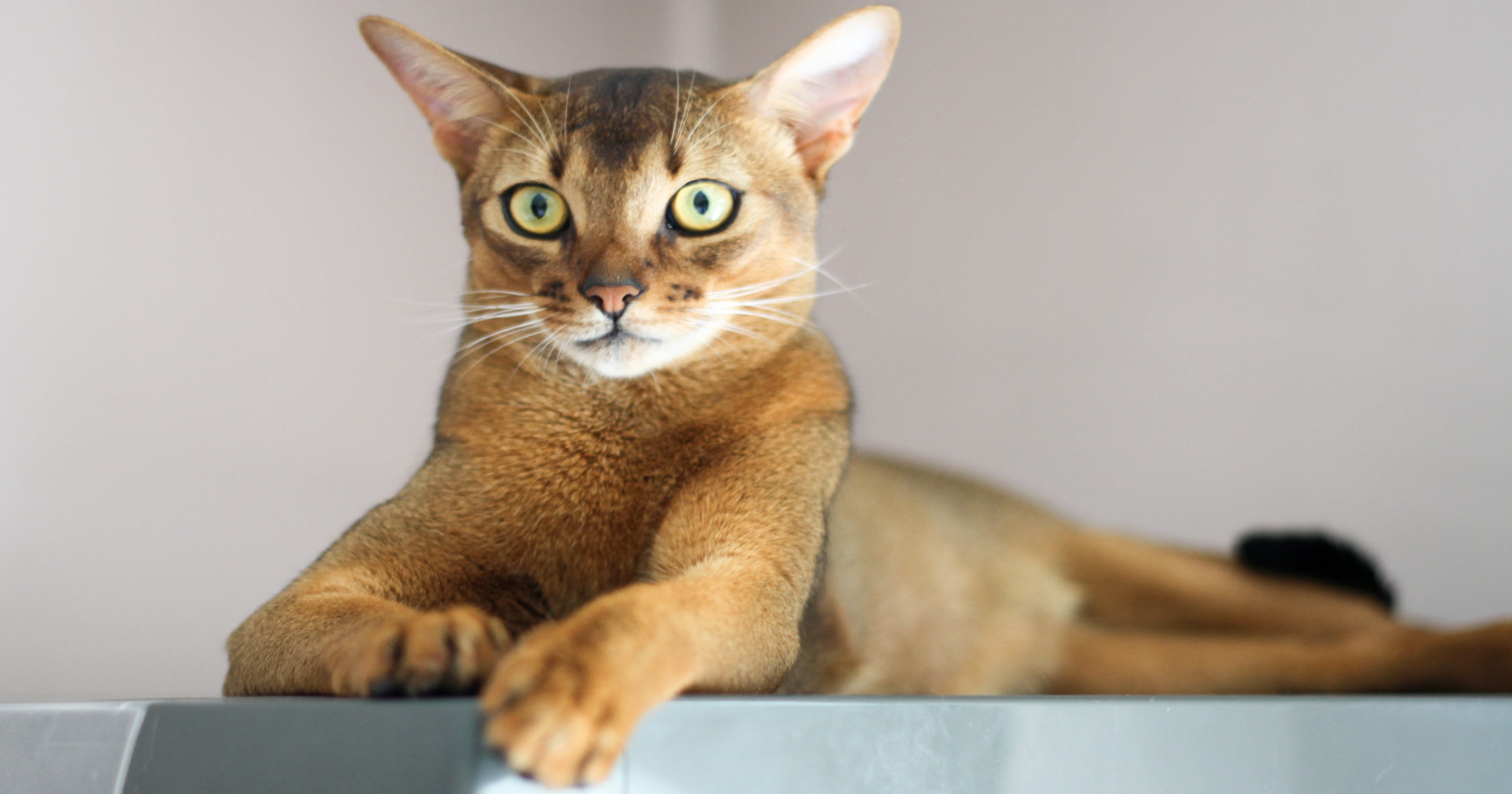HEALTH & WELLNESS

TRENDING
OSTEOARTHRITIS IN CATS

Osteoarthritis (OA) in cats is now more frequently diagnosed
WHAT IS OSTEOARTHRITIS (OA)?
Advances in veterinary medicine have helped to extend the lives of our pets. Because of longer lives, chronic diseases such as osteoarthritis are more common. Osteoarthritis has been recognized as a disease in dogs; however, in recent years there is more awareness and diagnosis of this condition in cats resulting in better care and pain management.
OA is a chronic degenerative condition of the joints, in which:
- The normal cartilage cushion in the joint breaks down
- There are changes to the tissues that comprise a joint, such as cartilage, joint capsule, and surrounding bone
- Adjacent bones eventually rub against each other, causing pain, decreased joint movement, and sometimes the formation of bone spurs
Although OA is a progressive disease, it can be successfully managed so that the disease is slowed and remaining joint function is preserved.
How Common is OA?
According to numerous studies, many of which analyze radiographs, an alarming number of (especially older) cats suffer from degenerative joint disease in one form or the other. The studies have helped us realize that OA is very common in cats and even more severe in older cats. Most affected joints include the hip, stifle (knee), tarsus (ankle), and elbow. Older cats are more likely to be clinically affected by OA.
OA Causes
Joints are cushioned by cartilage, a rubbery connective tissue, found at the ends of bones. When this cartilage starts to deteriorate it leads to inflammation and discomfort and the damage continues.
Natural wear-and-tear of daily life, joint injury as well as certain abnormalities may contribute to OA, but the specific causes are still unclear. The primary cause of OA often cannot be identified in cats and the disease is less well understood compared to dogs.
Signs of OA
Cats are natural survivors and masters at hiding pain, which means discomfort and illness often go unnoticed. Signs of OA may include:
- Less mobility: change in activity level; reluctance to jump; stiffness in legs; struggles to use stairs, litter tray and cat flap
- Lameness or changes in gait
- Less activity: increased sleep time; decreased exploring and interaction; choosing more accessible sleeping spots
- Grooming changes: less frequent; more time spent on affected joints; overgrown claws; a scruffy/matted coat
- Change in character/mood: more solitary; irritable when handled, stroked or interacting with other animals
- Inappropriate elimination: urinating and/or defecating in areas where they didn’t previously
THE FOLLOWING MAY INCREASE RISK OF OA
- Obesity
- Trauma / injury, e.g. fractures or dislocations
- Certain breeds are more prone to
- Kneecap dislocation formally known as Patella luxation e.g. Abyssinian and Devon Rex breeds
- Abnormal hip joint development, formally known as hip dysplasia (e.g. Maine Coon, Persian and Siamese breeds)
- Abnormality of cartilage causing severe arthritis which affects multiple joints (the Scottish Fold breed particularly)
- Acromegaly (unusual and uncommon): increased growth hormone secretion, caused by a tumor, leads to diabetes and/or arthritis
DIAGNOSIS OF OA
- Mature cats (aged 7+) should be checked frequently and thoroughly and owners should communicate any changes and signs noticed to their veterinarian.
- A veterinarian should be able to detect issues during an examination. X-rays are recommended to make specific diagnoses and rule out other conditions.
- Blood and urine tests could help reveal other problems and help to ensure that the cat’s organs are able to cope with chronic medication.
MANAGING OA
Making environmental changes could greatly improve your cat’s comfort and quality of life. Such changes include:
- Placing comfortable, warm beds in easily accessible areas where your cat will feel safe
- Providing basic steps or ramps to reach higher areas
- Making sure water and food are easy to access
- Grooming your cat and cut overgrown claws
- Providing a litter tray with a low side
- Ensuring the cat flap is easy to use
Weight Management
- Manage your cat’s weight or seek help if your cat is overweight
Medical Treatment
A multimodal approach is best for the treatment of OA in cats.
- Some options are nonsteroidal anti-inflammatory drugs (NSAIDs) that have been found very effective in treating pain and inflammation caused by osteoarthritis in cats.
- Sometimes NSAIDs can’t be administered, in which case, medications to treat chronic pain may be prescribed.
- Dietary supplements, physical rehabilitation and surgical techniques are other therapies that could be included to improve quality of life.
Related Articles








